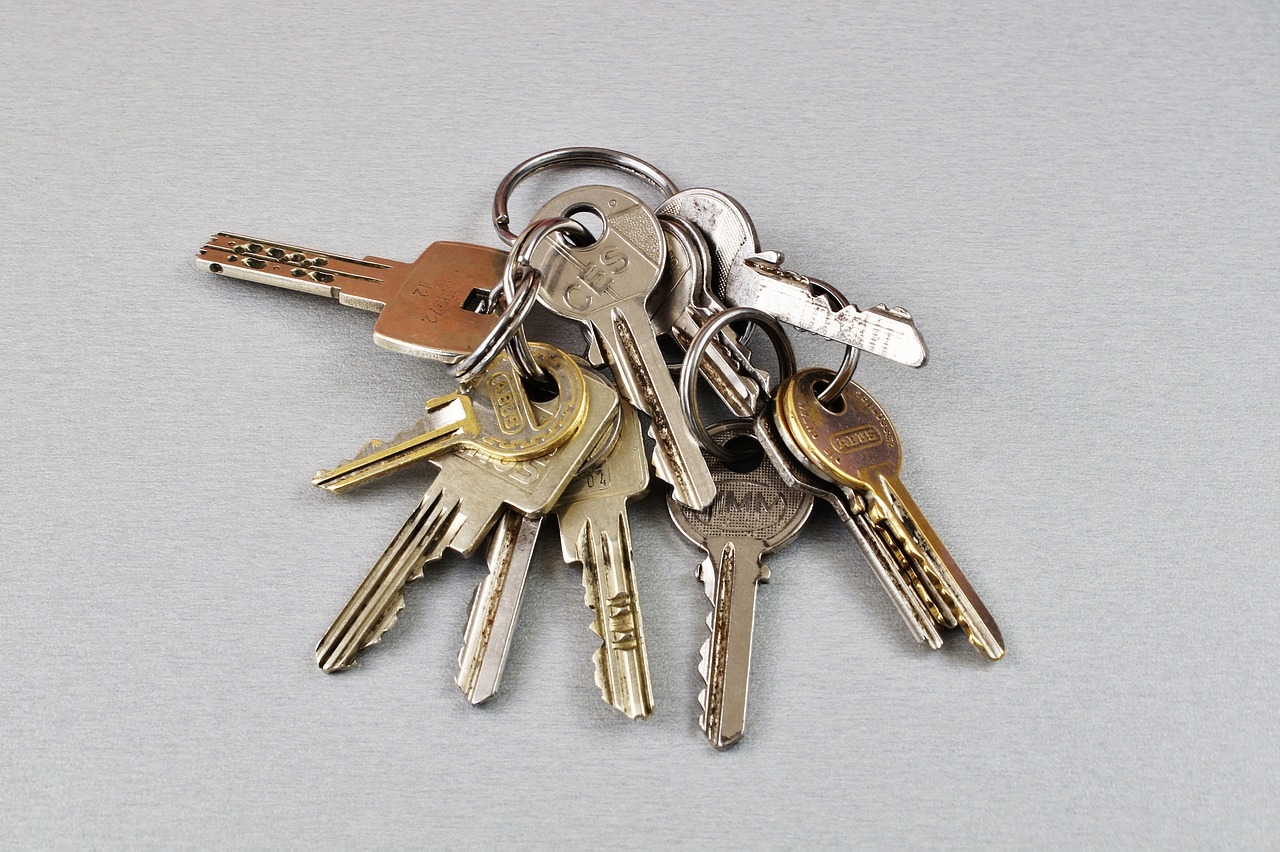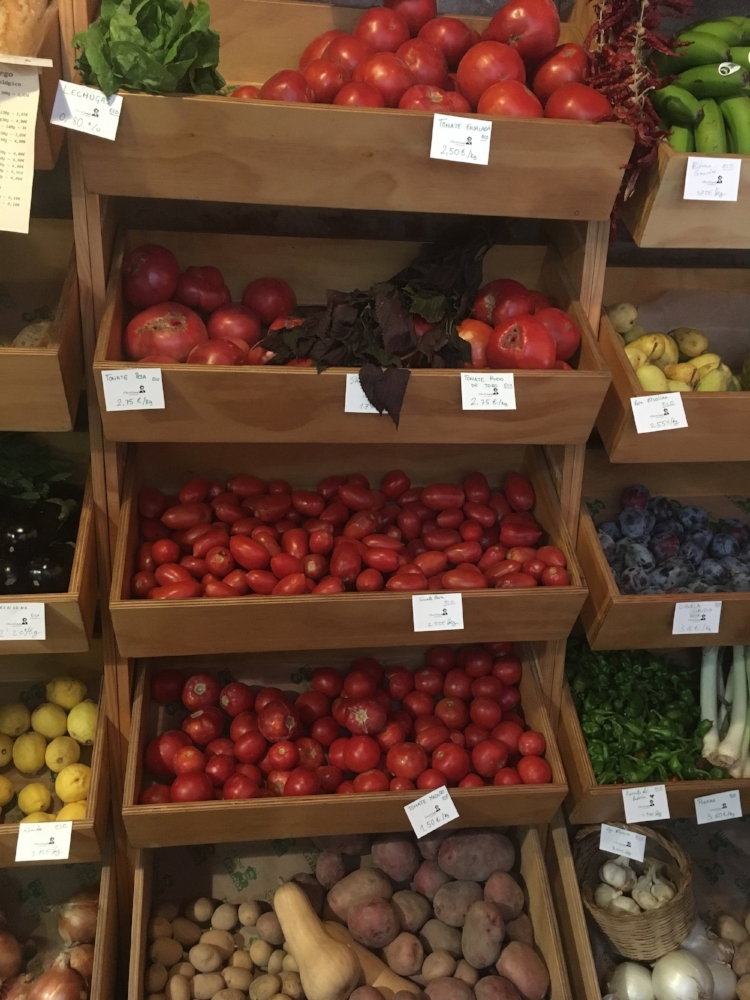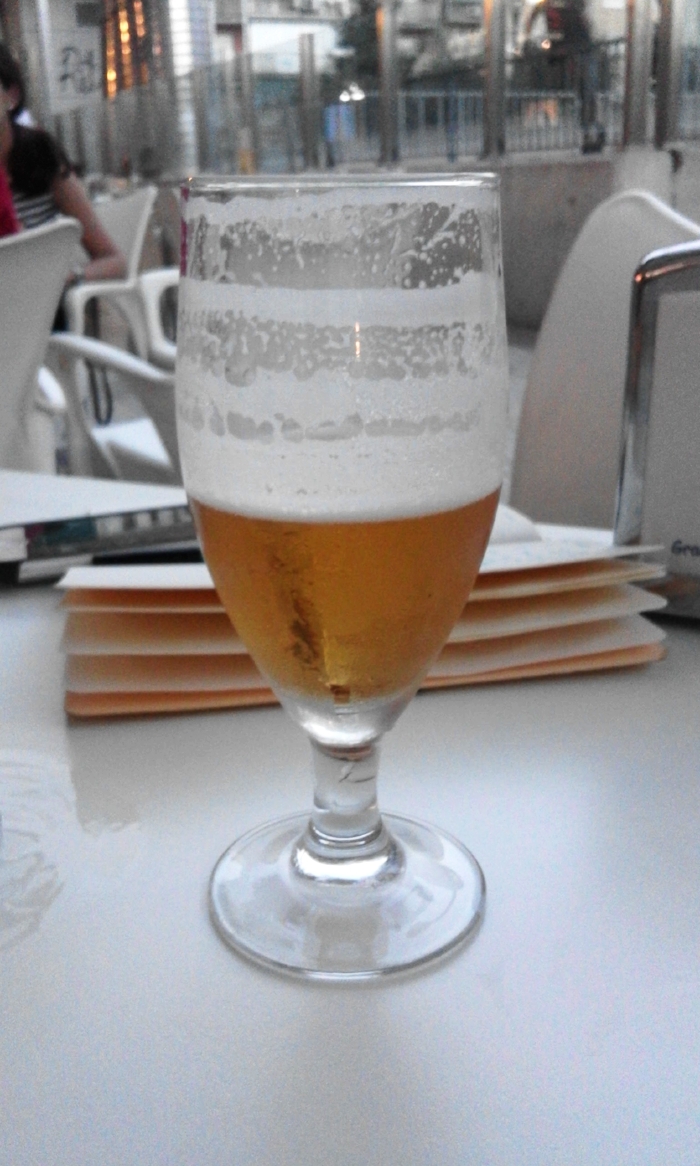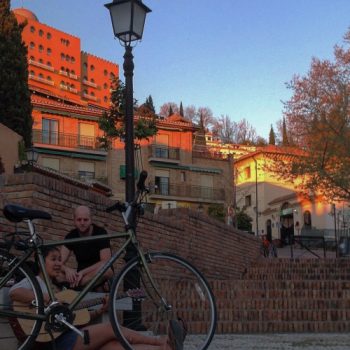
20 Small but Surprising Differences You’ll Find in Spain
Dear Sarah,
Once you spend enough time in Spain, you might not even notice the differences but there are many small, everyday things that you’ll find are a bit different when you move abroad. Of course, keep in mind that “different” for me means compared to the United States, and some of the following may not be surprising to you. We’d love to hear how Spain compares to your home country as well so please join the conversation in the comments below by sharing any differences you’ve noticed! Here are some of the top little differences that come to mind for me:
Spanish Homes
 1.) Locks face the other way: Here, you put the key in with the teeth facing down, not up! Flat keys (that don’t necessarily have ‘teeth’ on either side) are also common and they go in sideways to what I would expect (aka parallel to the ground).
1.) Locks face the other way: Here, you put the key in with the teeth facing down, not up! Flat keys (that don’t necessarily have ‘teeth’ on either side) are also common and they go in sideways to what I would expect (aka parallel to the ground).
2.) Door knobs are in the middle of the door: I remember the first time I went into a Forever 21 changing room in the States and was dumbfounded by the pure uselessness of a knob in the middle of the door. Now I use the door knob in the middle of my apartment door without a second thought (and yes, it works)
3.) The ground level is called ‘0’, not ‘1’: We’re so used to the first floor being the one that you enter a building on and only needing to go upstairs if you’re looking for floor 2 or above, that the very first time I went to look at an apartment in Granada I entered and rang the bell of the wrong flat! Be aware that the floor you enter on will be considered ‘0’ or baja (lower level).
4.) The washing machine is in the kitchen (or the bathroom): Very few “laundry rooms” in this country! Although this doesn’t at all feel sanitary to me, your washing machine will likely be located very close to where you prepare your food. Just be sure to keep the door closed while you make lunch and you won’t have any problems!
5.) There is no dryer: Although they surely exist, I’ve personally only met three people who own dryers here in Spain. Outdoor clothes line and tendero to the rescue. If you need some tips for effective survival sans-dryer check out this article.
Spanish Shops
6.) Milk is not refrigerated: If you continue to scour the refrigerated section of your average grocery store here in Spain you’re unlikely to find any milk. Instead, you’re going to want to check out the regular aisles for UHT milk that comes in a brik (quite literal translation for this brick-shaped rectangular container). It is completely normal and safe, I promise you!
7.) Half of the meats are not refrigerated either: The cured meat culture is huge in Spain and you will find an entire section of the meat department is stored at room temperature. You’re probably not going to have the cash to purchase a full leg of jamon but I highly recommend taste-testing your way around the different types of sausages for an ideal pairing with wine and cheese!
8.) You can open up the packs and purchase drinks individually: At first, I was shocked that people would be so barbaric but then I started to notice that there are literally prices listed for the pack or the individual cans/bottles. Only need two beers for the game or three Cokes for the week? Take your pick!
 9.) There are individual stores for everything: Of course, you can find specialty shops that cater to particular needs in the US but I feel that this is more of a small town nicety than a norm. Here, the tradition of shopping at local markets, fruterias (fruit shops), and carnicerias (butchers) for you food is alive and well. There’s also papelerias for your stationary/school supply needs, bisuterias for your hats and other headwear needs; the list goes on and on. My favorite of which being…
9.) There are individual stores for everything: Of course, you can find specialty shops that cater to particular needs in the US but I feel that this is more of a small town nicety than a norm. Here, the tradition of shopping at local markets, fruterias (fruit shops), and carnicerias (butchers) for you food is alive and well. There’s also papelerias for your stationary/school supply needs, bisuterias for your hats and other headwear needs; the list goes on and on. My favorite of which being…
10.) There’s actually a person who repairs your old shoes: This is not only quaintly reminiscent of yesteryear but also super useful as you’re sure to wear out the heels of your favorite shoes as you begin to walk everywhere around your city. The prices are generally very reasonable and you can often get a copy of your keys made at the same place, if it’s called Calzado y Llave (or if you simply see a big key symbol).
11.) Most people don’t own printers: Back home, it felt like a staple household appliance but in Spain, here’s a store for that! Just stop into the imprenta or any shop that advertises fotocopias for all your printing needs.
12.) Stores close on Sunday: Just don’t forget to stock up on your groceries and whatever else you need to purchase before Sunday or any holiday rolls around! Especially in bigger cities, more and more options are becoming available for Sunday shopping but they tend to be the more expensive options as this is not the tradition in Spain.
Spanish Dining and Drinking
13.) Meals can take hours: Food and family/friend time is cherished here and you can expect most people to have a long enough break at lunchtime to go home and eat with their families (or even finish work before lunch if they’re lucky). Lunch is the most important meal of the day, but Spaniards enjoy and draw out the dinner time as well, especially when they eat out. Read more about the eating schedule here and here.
14.) Tipping is not a thing: The price you see on the menu is actually the price you pay–no sales tax or tip needs to be added. Because waiters here are not dependent on tips, you may experience some differences in the service but keeping in mind #12, this is not necessarily a problem. As with everything in life, if you feel so inclined to leave a tip, it would not go unappreciated, but it is not at all rude not to tip.
 15.) Bars tend to only have one beer on draft: Coming from a country where you might have upward of 15 or 20 beers on tap at the sports bars and pubs, this was at first very odd to me. However, you soon get used to it (and just start preferencing bars that serve your favorite brand). If not, there’s always a wider selection of bottled beer. Read more about how to order your beer here.
15.) Bars tend to only have one beer on draft: Coming from a country where you might have upward of 15 or 20 beers on tap at the sports bars and pubs, this was at first very odd to me. However, you soon get used to it (and just start preferencing bars that serve your favorite brand). If not, there’s always a wider selection of bottled beer. Read more about how to order your beer here.
16.) (Free) Tapas culture: The only thing better than taste-testing a bunch of new dishes is getting to do so for free! If you’re in Granada or other Andalusian cities, don’t be surprised if you receive a (nicely-sized) free plate of food when you order your drinks. If you’re somewhere that doesn’t do this, I would still encourage you to try out this way of eating your way through Spain.
17.) Cocktails come with a nut mix + gummy snack combo: This is probably the best part about going out only for drinks (to the type of place that doesn’t have a kitchen or at a non-meal time). Typically, you will be given a small bowl of nuts or ‘bar mix’ (not so surprising) but what’s even better is when you get the gummies or chuches on top! Such a weird combination to me, but normal here and surprisingly delicious!
Random
18.) Lined notebook paper is uncommon: You know the typical ‘wide ruled’ or ‘college ruled’ options we have in the US? Those are pretty much a non-starter here! Notebooks with ‘graph paper’ or blank pages are much more common and when you DO come across lined paper it has these extra lines for spaces between your writing(?).
19.) People regularly use little caps on their toothbrush: Now, maybe this is just me, but I had never before had a toothbrush that CAME with its own little cap. It’s common to purchase a toothbrush ‘travel case’—that usually encloses the entire toothbrush—but here in Spain most toothbrushes will come with this little cap that covers just the brush bit and people use it not only for traveling but snap it around their brushes between every use!
 20.) The text on the spines of books faces the opposite way: Cue everyone running to their bookshelves to check this one! The first time or two this happened, I thought it was a fluke but the wording on the spines of books that are published in Spanish truly do face the other way, with the title starting at the bottom of the spine, going up. Looking for a Spanish book to add to your collection? Check out some of our recommendations here.
20.) The text on the spines of books faces the opposite way: Cue everyone running to their bookshelves to check this one! The first time or two this happened, I thought it was a fluke but the wording on the spines of books that are published in Spanish truly do face the other way, with the title starting at the bottom of the spine, going up. Looking for a Spanish book to add to your collection? Check out some of our recommendations here.
I had so much fun coming up with these random differences and now my brain is spinning with even more! Let us know if there are particular differences you’ve noticed or specific categories of differences you’d like us to talk about next. I’m sure we’ll be back with another list soon!
Sincerely,
Spain




